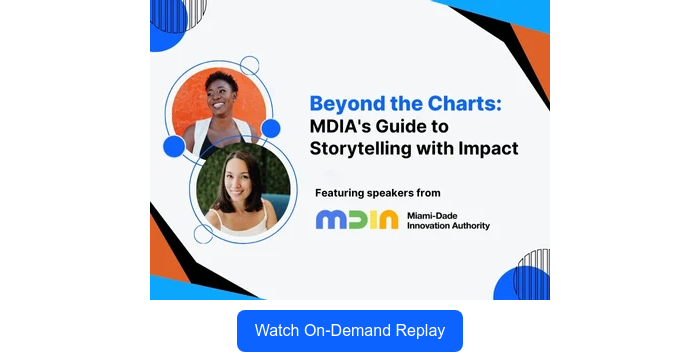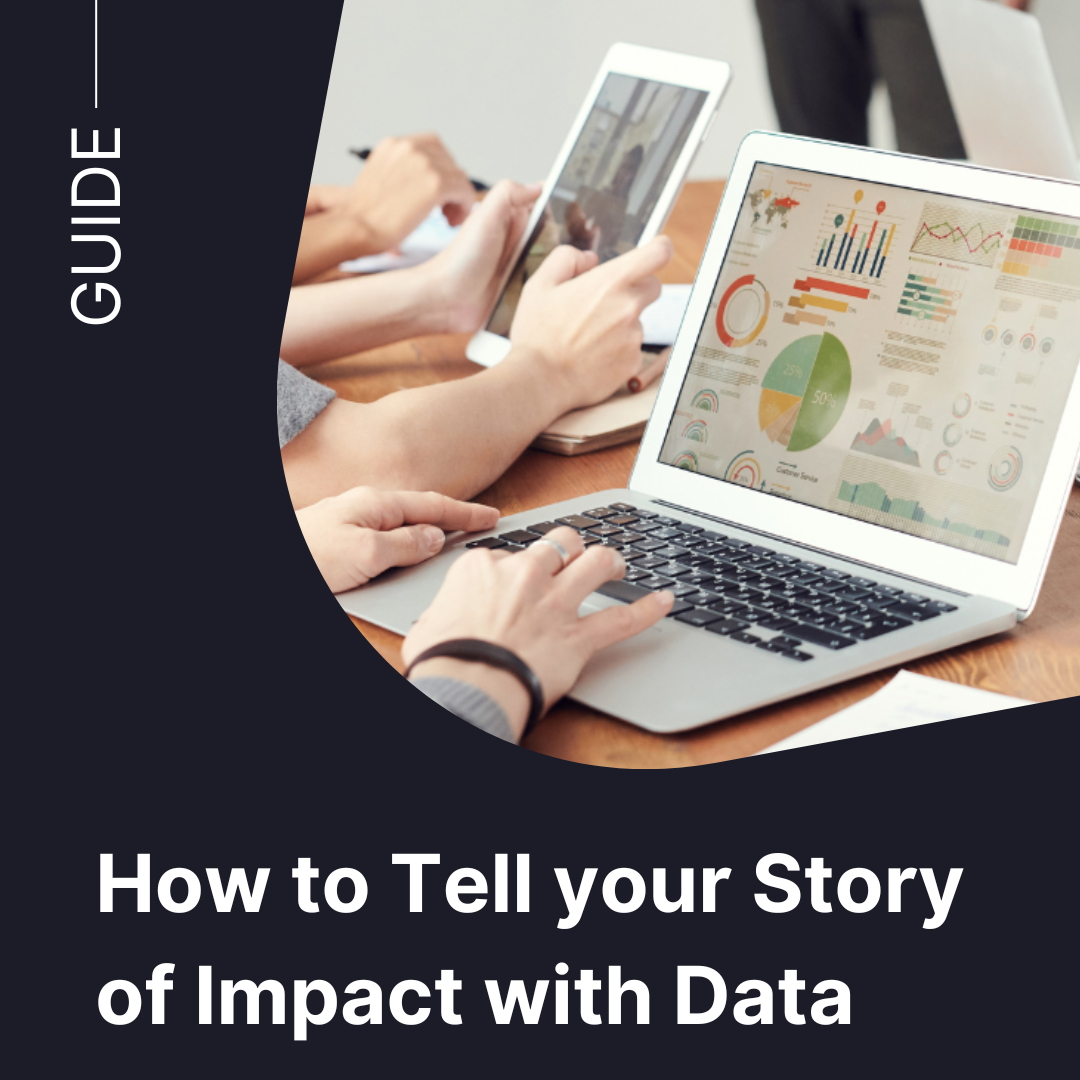Beyond the Charts: Strategic Storytelling for Impact - Key Insights from Miami-Dade Innovation Authority
In a recent Impact Learning Collective session, we brought together philanthropic leaders, nonprofit practitioners, and data experts for a candid conversation about what it really takes to move from siloed efforts to aligned, collaborative action, and how to effectively tell stories of impact.
This dynamic webinar featured speakers from the Miami-Dade Innovation Authority (MDIA), including Leigh-Ann Buchanan, President & CEO and Dana Tumbaga, Strategic Impact Senior Manager. The pair shared insights on using both qualitative and quantitative data to tell powerful stories that engage funding partners and drive social impact. The conversation touched on building trust, shifting power dynamics, and the role of data in fostering relationships rather than compliance.
If you missed the session, you can watch our on-demand replay, or keep reading for key highlights and takeaways that stood out.
Key Highlights:
1. We don’t need more directives—we need more collaboration
The key to advancing social impact isn’t more top-down direction—it’s making space for mutual learning and co-creation. That’s the spirit of our Impact Learning Collective sessions - creating spaces for different players in the ecosystem—funders, nonprofits, governments—to better understand one another and work together more effectively. Collaboration begins with empathy, shared language, and recognition that no one side of the equation holds all the answers.
2. The best way to communicate impact is to appeal to all areas of the mind
The Greek philosopher Aristotle often talked about different modalities of persuasion and proposed that the best way to communicate impact is through the rhetorical triangle - combining logos, ethos and pathos. Your strategy for effective storytelling has to include an appeal to the logical mind. It has to include data or something that establishes your credibility, and most importantly, it has to pull at your heartstrings. When these three things come together, that's when you have a real powerful story.
3. Data should be a bridge, not a barrier
Data is often seen as a tool for funders to track outcomes, but panelists encouraged a shift in mindset: when data is shared transparently and used to support learning, it can strengthen relationships and align efforts.
Oftentimes funders will ask for all the data in the world, and then this creates an unequal power dynamic where nonprofits will acquiesce because there's a tendency to want to prove that you are doing great work so that you can then get more funding.
But funders and nonprofits alike should be stepping back to really think about what are the 2 to 3 most important metrics that really demonstrate efficacy of your work, or will help you gain insights to improve your work, and just focus on those. By zeroing in on the most important datapoints, you can add depth and structure to your impact story, helping to build trust and credibility - while also driving continuous learning.
4. Let nonprofits lead
One recurring theme was the importance of centering nonprofit voices in decision-making processes. This means shifting from top-down strategies to co-creation, where nonprofits are not just implementers, but strategic partners.
“The people closest to the problems are also closest to the solutions — if we’re willing to listen,” shared Dana Tumbaga.
5. Embrace flexibility and nuance
Philanthropy often gravitates toward clean logic models and quantifiable outcomes, but social change is rarely linear. Panelists encouraged funders to embrace complexity, remain flexible, and make space for the qualitative dimensions of impact.
6. Storytelling is a strategic tool
A major focus of the session was the importance of using storytelling to translate complex data into messages that resonate. The Miami-Dade Innovation Authority shared real-world examples of how startups are leveraging data to craft stories that engage funders, partners, and the public.
They also emphasized the importance of creating captivating content. Video storytelling, specifically, creates deeper engagement, fosters stronger emotional connections with audiences, showcases your mission's real-world impact, and ultimately drives greater support and engagement.
Here's one example that showcases effective video storytelling:
Ultimately, it’s not just about numbers; it’s about what those numbers mean, who they represent, and how they're used to move people to care and act.
Takeaways:
-
Invest in relationships and trust before expecting results
-
Use data to fuel dialogue and learning
-
Shift power by inviting nonprofits into strategy conversations
-
Accept complexity and resist the urge to oversimplify impact
-
Choose storytelling mediums based on your audience and goals
-
Frame data in a way that connects emotionally, logically and credibly to inspire action
Watch the Full Conversation:
You can catch the full replay to hear all the insights, stories, and strategies shared by our speakers. Don’t miss this opportunity to deepen your understanding of what it takes to drive meaningful, lasting change.

March 31, 2025


